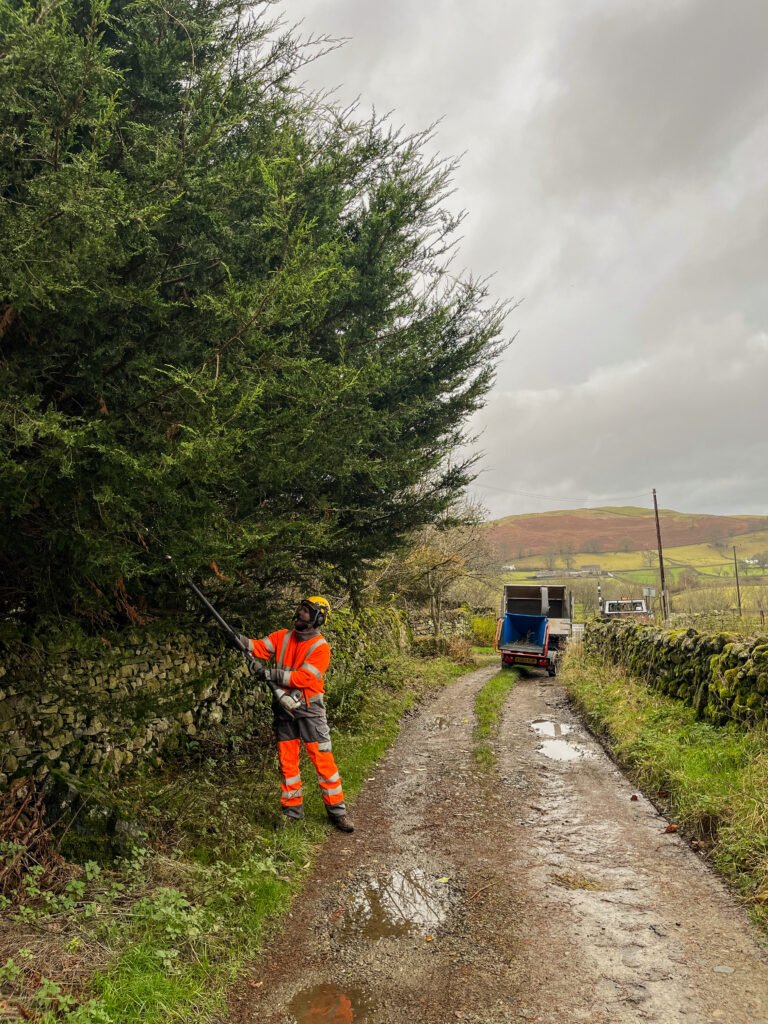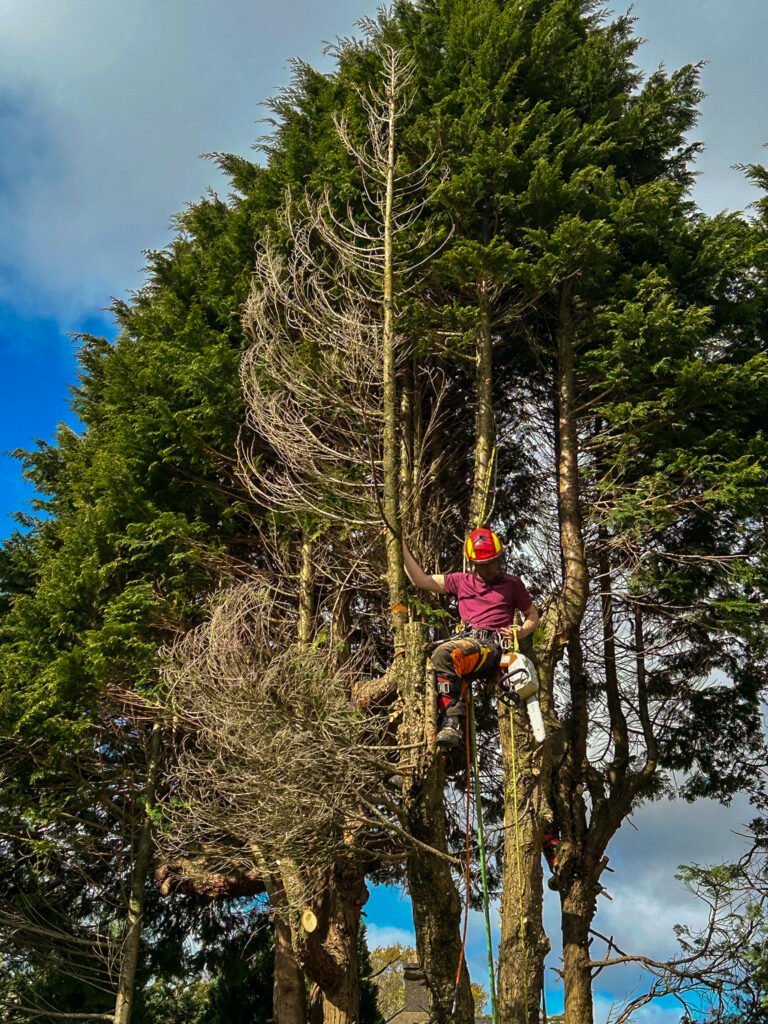Pruning Leylandii: Managing Growth, Preserving Ecology, and Avoiding Neighbour Disputes
Leylandii (Leyland cypress) is one of the UK’s most common evergreen conifers—fast-growing, hardy, and excellent for privacy screening. But its vigorous growth can also make it one of the most controversial trees in domestic gardens. Left unmanaged, a small hedge can soar to 10 metres or more, overshadowing gardens, blocking light, and often causing tensions between neighbours.
This guide explains how to prune Leylandii safely and effectively, while acknowledging both their ecological value and the responsibilities that come with maintaining them.
Why Prune Leylandii?
1. To Control Size and Prevent Overshadowing
Leylandii can grow over 1 metre per year. Without regular maintenance, they can quickly exceed a suitable height, blocking light from neighbouring gardens and even homes. In severe cases, this can fall under the High Hedges legislation in the UK, making proactive pruning essential.
2. To Promote Dense, Healthy Growth
Regular trimming encourages thick, even foliage, preventing gaps or bare patches.
3. To Prevent Stress and Dieback
Allowing Leylandii to become too large and then cutting back heavily can shock the tree, leading to brown patches or internal dieback.
4. To Maintain Safety
Overgrown Leylandii can become top-heavy and more vulnerable to wind damage, especially when planted in exposed areas.


The Ecological Value of Leylandii
Although Leylandii is not a native species, it still plays a role in supporting local biodiversity:
- Shelter for birds such as robins, wrens and blackbirds
- Nesting habitat, especially in thick, mature hedges
- Wind protection for more delicate plants
- Year-round cover, which is valuable in urban and suburban gardens
- A refuge for insects, particularly in the lower, shaded portions of the hedge
However, its value must be balanced with responsible management—an unmanaged Leylandii hedge can overshadow neighbouring gardens, reducing plant diversity and creating ecological imbalance.
When to Prune Leylandii
The best time to prune Leylandii is:
- Late spring to early summer, after the first major growth flush
- A second light trim in late summer or early autumn if needed
Avoid pruning during bird nesting season (March–August) unless you are certain the hedge is not being used by wildlife. Always check for active nests before cutting.
How to Prune Leylandii Properly
1. Trim Little and Often
This is the golden rule. Leylandii does not regenerate from old brown wood. If you cut back too far into leafless sections, the hedge will not recover.
2. Maintain the Hedge Shape
Aim for a slightly narrower top and wider base. This “hedge taper” allows light to reach the lower branches and prevents them from dying back.
3. Keep the Height Reasonable
For most gardens, maintaining Leylandii at 2–4 metres is sustainable and neighbour-friendly.
4. Use Sharp Tools and Make Clean Cuts
This reduces stress on the tree and produces a neater finish.
5. Avoid Drastic Reductions
Large, sudden cuts can shock the tree and may leave it permanently brown or patchy.
Overshadowing and Neighbour Considerations
Leylandii disputes are one of the most common causes of neighbourhood tension. Overshadowing can:
- Reduce sunlight to gardens or windows
- Harm lawns and planting beds
- Affect enjoyment of outdoor space
- Lead to official complaints under the High Hedges Act
Good Practice to Avoid Issues
- Keep the hedge at a reasonable height
- Trim annually to prevent rapid growth
- Communicate with neighbours early if height might become a problem
- Consider long-term manageability—if the hedge is too tall to maintain safely, professional pruning or staged height reduction may be needed
Environmental Responsibility
While Leylandii provides shelter for wildlife, overgrown hedges can create deep shade and suppress biodiversity on both sides of the boundary. A well-maintained hedge, on the other hand, offers:
- Evergreen cover for birds
- Space for insects
- Less dominance over surrounding plants
- A more balanced garden ecosystem
Regular pruning not only keeps your hedge healthy—it also helps maintain a fair environment for wildlife and neighbours alike.
When to Call a Professional
Consider contacting a trained arborist or hedge-cutting specialist if:
- The hedge is too tall to prune safely from the ground
- You need a reduction rather than a light trim
- There is concern about damage, dieback, or disease
- The hedge borders a road, building, or neighbouring garden where safety is critical
Professionals can reduce Leylandii height in controlled stages to minimise shock and maintain a healthy structure.
Final Thoughts
Pruning Leylandii is all about regular, gentle maintenance and consideration for both nature and neighbours. When managed well, Leylandii can be an attractive, wildlife-friendly, and practical boundary hedge. When neglected, it can grow into a source of stress, shade, and conflict.
By trimming consistently, monitoring height, and respecting the surrounding environment, you can enjoy the benefits of Leylandii without the downsides.
Need some professional help? Contact us today for a free quote.
